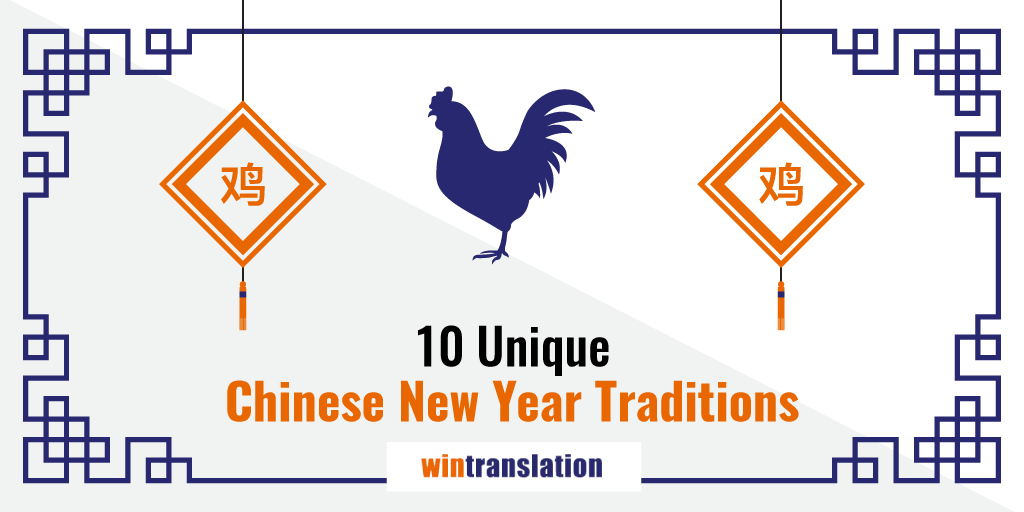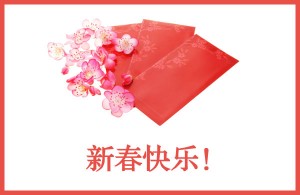10 Unique Chinese New Year Traditions

Have you ever wondered why dragons always make an appearance for Chinese New Year? Or why all the red lanterns and decorations? Read our compiled list of 10 Chinese New Year traditions to expand your knowledge of the holiday celebrated by over a billion people around the world!
2015 is the Year of the Sheep
Chinese New Year, also known as the Lunar New Year, or Spring Festival, is celebrated during the first 15 days of the first month on the Chinese calendar. In 2015, Chinese New Year falls on February 19th. According to the Chinese Zodiac, 2015 is the year of the sheep. Keep reading for a list of 10 unique traditions of Chinese New Year!

1) Red Decorations
The colour red is featured heavily in Chinese New Year decorations and symbolizes good fortune, beauty, and happiness. Several days before the New Year, decorations start going up in households that are celebrating. Red couplets and pictures with Chinese characters like 春/spring or 福/blessings are posted on the front door, lanterns are hung up, and red paper cut decorations are pasted on the windows. Before commencing with the decorating however, homes are given a thorough cleaning from top to bottom.
2) Fireworks, Firecrackers, & Dragons

Every household ignites fireworks or firecrackers around midnight, as soon as the New Year comes in. The story behind this also explains why dragons are often featured in Chinese New Year celebrations. Legend says that Chinese New Year began with a battle against a mythical dragon-beast (Nian) who would come on the first day of the New Year to eat the villager’s children, livestock and crops. It was said that Nian was afraid of firecrackers, and the colour red. So people would set off firecrackers, and would hang up red lanterns and other items in order to scare him away.
3) The New Year’s Feast

On New Year’s Eve, family members gather together for a family reunion dinner. This is one of the most important gatherings of the year, especially for those with family members who live away from home. The feast often features dumplings, chicken, rice and fish. Fish and dumplings are the most important dish in Northern China and signify prosperity. Other foods like oranges are eaten, and also displayed because they are thought to bring good luck.
4) Gifts Come in Small Red Packages
After the New Year’s feast, adults will give red packets or envelopes with money to children. This money has a special name called Ya Sui Qian, literally, to suppress or drive away the evil spirits for children.

5) Sacrifice to the gods
To give thanks and also to pray for good fortunes and blessings for the coming year, starting on New Year’s Eve, people light incense sticks and put dishes of food on a table similar to an altar.

6) Neighbourly Greetings
On the first day of the New Year, everyone gets up extra early in order to go door-to-door spreading greetings to neighbours and nearby friends.
7) Visiting the Parents/In-Laws
On the second day of the New Year, married daughters will go back home to pay a visit to their parents with their husbands. The husbands (son-in laws) are expected to give their respects to their parents’ in-law.
8) Family Gatherings
From the third day onwards, people visit other relatives and friends who live further away. They bring cakes, wine, or fruits with them and the host usually provide big meals and wine to drink.

9) Taboos During Chinese New Year

There are several things which are not to be done during the Chinese New Year festival. Examples of some taboos include:
- Nobody should sweep their floor on the first day, because doing so will sweep away all the fortunes and blessings,
- Everyone should be careful not to say ominous words like ”die”, “worn”, or “poor”.
- On the fifth day of the New Year, people are to stay home and welcome the god of wealth. It is believed that visiting family and friends on this day brings bad luck. After the fifth day has passed, visiting friends and relatives resumes.
10) The Lantern Festival

Celebrated on the 15th and 16th days of the New Year, this is another occasion for celebrations and reunions, and marks the end of the Chinese New Year festivities. During these two days, entertaining activities take place in public places like parks and squares. Examples include: colourful lanterns shows, lion and dragon plays, riddle solving events. Sweet glutinous rice balls brewed in soup are also commonly eaten during this time
Let the Celebrations Begin!
Armed with this knowledge of Chinese New Year traditions, you can feel confident joining in on the celebrations!
Are you wondering how to wish a Happy Chinese New Year to your friends, neighbours and co-workers who are celebrating? You can say “Gong Xi Fa Cai” (in Mandarin) or “Gong Hey Fat Choy” (in Cantonese). Or keep it simple and just wish them a “Happy Chinese New Year!”

This Post Has 0 Comments